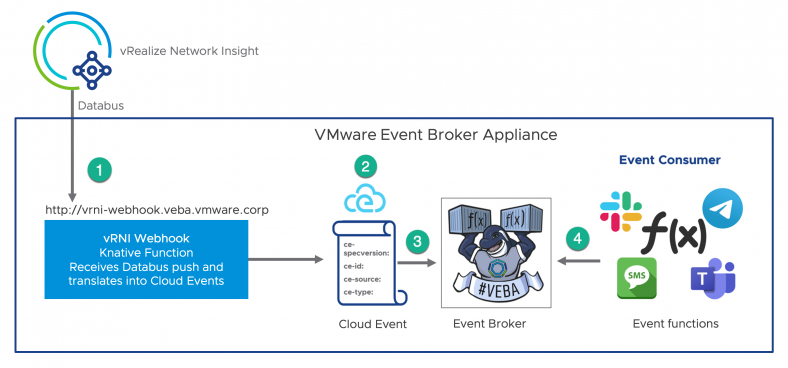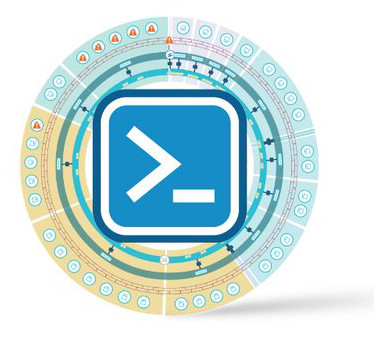With the release of vRealize Network Insight 6.4 – something awesome was added: the databus. In its essence, the databus is a feature that exports data out of vRNI using REST API webhooks. These webhooks deliver the data over HTTP[S] to an endpoint that can then parse and process the data. There are several message groups, which you can subscribe an endpoint to. The message group decides what type of data is exported and with the initial databus feature, you can subscribe to: Application updates (newly discovered, updated, or deleted apps), and Problems (alerts). The latter open up event-based … Read more
TagPowervRNI
vRealize Network Insight 6.3 brought a new API endpoint: /search/ql. The QL stands for Query Language, which is the same language that’s used in the search bar. I added support for that endpoint in PowervRNI 2.0 with the cmdlet Invoke-vRNISearch. With this post, I’d like to explain why that’s the best since sliced bread. 😉
Previously, there was the /search API endpoint, but that used an internal query language. You would run a search in the vRNI interface, open up the browser Developer Tools and look for the internal query that went against the vRNI backend. You could … Read more
Similar to my last post, I found another small gem in the vRealize Network Insight 5.3 release: the ability to backup all configuration within the Platform.
Unsupported
Before you continue reading, please note that this is an unsupported feature right in 5.3. It’ll be officially supported later this year. Having said that…These new API endpoints in the API Explorer caught my eye:
Snapshots
Currently, the supported method of creating backups of Network Insight is to power down the VM, take a snapshot, backup that snapshot, and power the VM back up. Needless to say, that needs some work. I … Read more
PowervRNI 1.8 is now available on the PowerShellGallery! This is a minor release; a few fixes, and 2 additions. Here are the full release notes:
- Fix adding timestamp to flows
- Fix adding ServiceNow datasources
- Fix cosmetic warning when using Get-vRNIDataSource without parameters.
- Add Dell OS10 switches as a Data Source type
- Add Get-vRNIEntityNames to get entity info on multiple entity ids at once.
A few more details:
Dell OS10 Support
You can now use dellos10switch as a value for the DataSourceType parameter, in order to add these types of switches as a data source with New-vRNIDataSource, or retrieving … Read more
Adding a bunch of data sources to vRealize Network Insight can be tedious, especially when the number of data sources goes into the 100s. This is one of the reasons why PowervRNI exists, and it’s been helping organizations to add their entire network infrastructure to Network Insight in 1 go.
There’s an example script in the PowervRNI GitHub repository called datasource-bulk-import.ps1, that allows you to add data sources of all types in bulk. To make getting started a little easier, I’ve recorded a video that focuses on adding 100 Cisco Nexus 5K switches to Network Insight in roughly 20 … Read more
Version 1.7 of PowervRNI was released yesterday, and this post covers what’s new in this version. If you’re not familiar with PowervRNI, it is a PowerShell module that you can use to manage vRealize Network Insight. From adding data sources & applications, to retrieve data from it, such a network flows, PowervRNI covers most of the public API endpoints of Network Insight.
What’s New?
A bunch! First off, it has been updated to support the new data sources and API calls that have been added in Network Insight 5.0. Second, I’ve added a few backlog items. I’ll … Read more
In a previous post, Integrating vRealize Automation with Network Insight, I covered how greenfield applications can be automatically pushed into vRealize Network Insight to provide application context with the analytics of Network Insight. This post is about importing brownfield into Network Insight to get insights into the behavior of your existing applications. Specifically, importing CMDB information from ServiceNow.
Disclaimer: This is something I built, it is not officially supported by VMware.
CMDB
In the case of existing applications, your Configuration Management Database (CMDB) should be your source of truth. There are a lot of CMDB products out there, … Read more
© 2025 Lostdomain
Theme by Anders Norén — Up ↑




